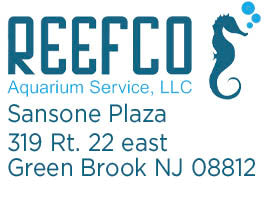LPS Coral Care Guide For Beginners
LPS corals are a fascinating group of corals that have large fleshy polyps, and a hard calcium carbonate skeleton, making them a type of stony coral.
These corals are named for their large polyps that can extend during feeding and are often brightly colored. LPS corals are much easier to keep than SPS corals, which require higher water flow, more intense lighting, and more stable water parameters. LPS corals are also less sensitive to fluctuations in water parameters, which makes them ideal for beginners.
LPS corals come in a variety of stunning colors and epic shapes, from branching to dome-shaped, to gigantic types that can grow up to several feet in size.
They are known to have a slower growth rate than SPS corals; however, they can still grow quite large if given the right conditions. Some of the most popular LPS corals include torch coral, frogspawn coral, hammer coral, and bubble coral.
LPS Coral Water Conditions
Maintaining the right water conditions is crucial for the health and well-being of your LPS corals. They require stable water parameters, and any fluctuations can lead to stress and disease. The following are some of the most important water parameters you should monitor:
Temperature: LPS corals require a stable water temperature between 75 and 80 degrees Fahrenheit.
Specific Gravity: Specific Gravity levels should be kept between 1.023 and 1.025.
pH: The ideal pH range for LPS corals is between 8.1 and 8.4.
Alkalinity: Alkalinity levels should be kept between 8-12 dKH. Alkalinity helps to stabilize pH levels in the water.
Calcium: Calcium levels should be kept between 400 and 450 ppm. Calcium is essential for the growth of LPS corals, as it helps to build their calcium carbonate skeletons.
LPS Coral Parameters
In addition to the above water conditions, you need to maintain the following:
- Nitrate: <15 ppm
- Nitrite: <0.2 ppm
- Phosphate: <0.15 ppm
- Ammonia: 0 ppm
LPS Coral Lighting
LPS corals require low to moderate lighting, so place your LPS accordingly in your reef tank. They do not require intense lighting like SPS corals, and too much light can increase stress, which in severe cases, could lead to sickness or death. Intense lighting is also linked to coral bleaching.
The ideal lighting for LPS corals should be between 50-150 PAR (Photosynthetically Active Radiation). It is recommended to use a high-quality LED light fixture for your LPS coral aquarium, as they provide better color and spectrum control, as well as energy efficiency. However, you can also use Metal Halides or T5 aquarium lighting.
NOTE: When introducing your LPS into your aquarium, it is always best to acclimate them to your specific aquarium lighting. So, start them off lower down the aquascape, and gradually move them toward their end placement.
LPS Coral Water Flow
LPS corals require low to moderate water flow. They do not require high water flow like SPS corals, and too much water flow can tear their delicate polyps and increase stress.
The ideal water flow for LPS corals should be between 5-10 times the volume of your aquarium per hour. It is recommended to use a powerhead or wave maker to create a gentle flow throughout your LPS coral aquarium.
What To Feed LPS Corals?
Like all corals, the majority of a coral’s energy comes from phytoplankton.
However, LPS corals are also opportunistic feeders and will eat a variety of coral foods, including meaty foods, such as shrimp, krill, and mysis, and pellet or flake foods that contain protein. Feeding LPS corals is really fun, but you should always use feeding tongs to prevent getting stung.
It is recommended to feed your LPS corals a couple of times a week, and to only feed enough that they can consume within 10-15 minutes. Overfeeding can lead to poor water quality and coral diseases.
LPS Coral Diseases
Like any marine organism, LPS corals are susceptible to disease. The most common diseases in LPS corals are bacterial infections, fungal infections, and parasites. The following are some signs that your LPS corals may be suffering from a disease:
- Loss of color
- Poor polyp extension
- Tissue recession
- White spots or patches on the coral
- Slow or rapid tissue necrosis
If you notice any of these signs, it is important to take action immediately. The first step is to test your water parameters to ensure they are within the appropriate range.
You should also inspect your LPS corals for any visible signs of disease, such as white patches or spots. If you suspect that your LPS corals are suffering from a disease, it is recommended to isolate the affected coral and treat it with a coral dip or medication.
Treatment is always best outside the main aquarium inside a hospital tank. This ensures your coral cannot infect other tank inhabitants.
Beginner-Friendly LPS Corals
Below we have 5 LPS corals perfect for beginner hobbyists:
- Candy Cane Coral
- Torch Coral
- Hammer Coral
- Bubble Coral
- Brain Corals

Summary
LPS corals are a beautiful and fascinating group of marine organisms that are easy to care for and perfect for both beginners and experts. By maintaining stable water conditions, providing low to moderate lighting and water flow, and feeding them a balanced diet, you can ensure that your LPS corals stay happy and healthy in your aquarium.
Remember to monitor your LPS corals for any signs of disease and take action immediately if you notice any issues. With the right care and attention, your LPS coral aquarium can be a stunning centerpiece in your home.
At Reefco Aquariums we have a large variety of LPS corals as we believe there is a coral for everyone.



